Best dirt jump bikes: For riders who can never get enough airtime
Here is Bike Perfect's pick of the best dirt jump bikes available for aerial acrobatics, skatepark stunts or simply brushing up on some skills at the pump track
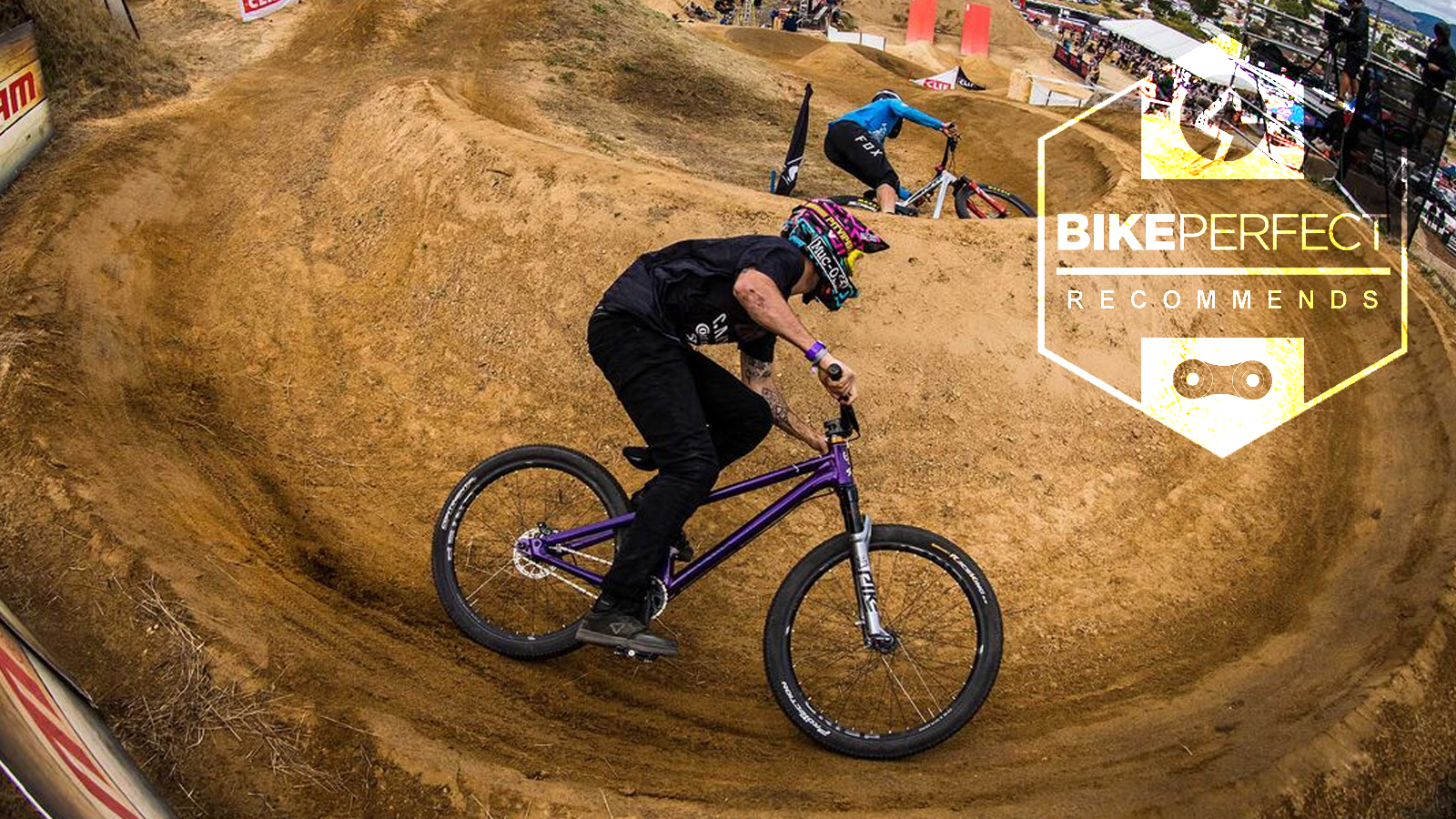
Picking the best dirt jump bikes is the best way to become familiar with getting air, whether you are a young rider, wishing to literally launch yourself into orbit, or an experienced mountain biker hoping to perfect your jumping technique.
Dirt jump bikes borrow a lot of technology from the best BMX bikes and combine it with the larger wheels, dirt jump-specific geometry and technology of suspension and disk brakes from mountain bikes.
When you are launching from extreme kickers at a dirt jump venue or flowing through berms and rhythm sections, geometry plays an integral part: it ensures your transition from terrain to air and back down to terra firma is safe.
Dirt jump bikes also feature dedicated construction and components, which can withstand severe twisting forces plus short or overshot landings.
Below is our list of the best dirt jump bikes you can buy or skip to the bottom to learn how to choose the best dirt jump bike.
Best dirt jump bikes
Why trust BikePerfect
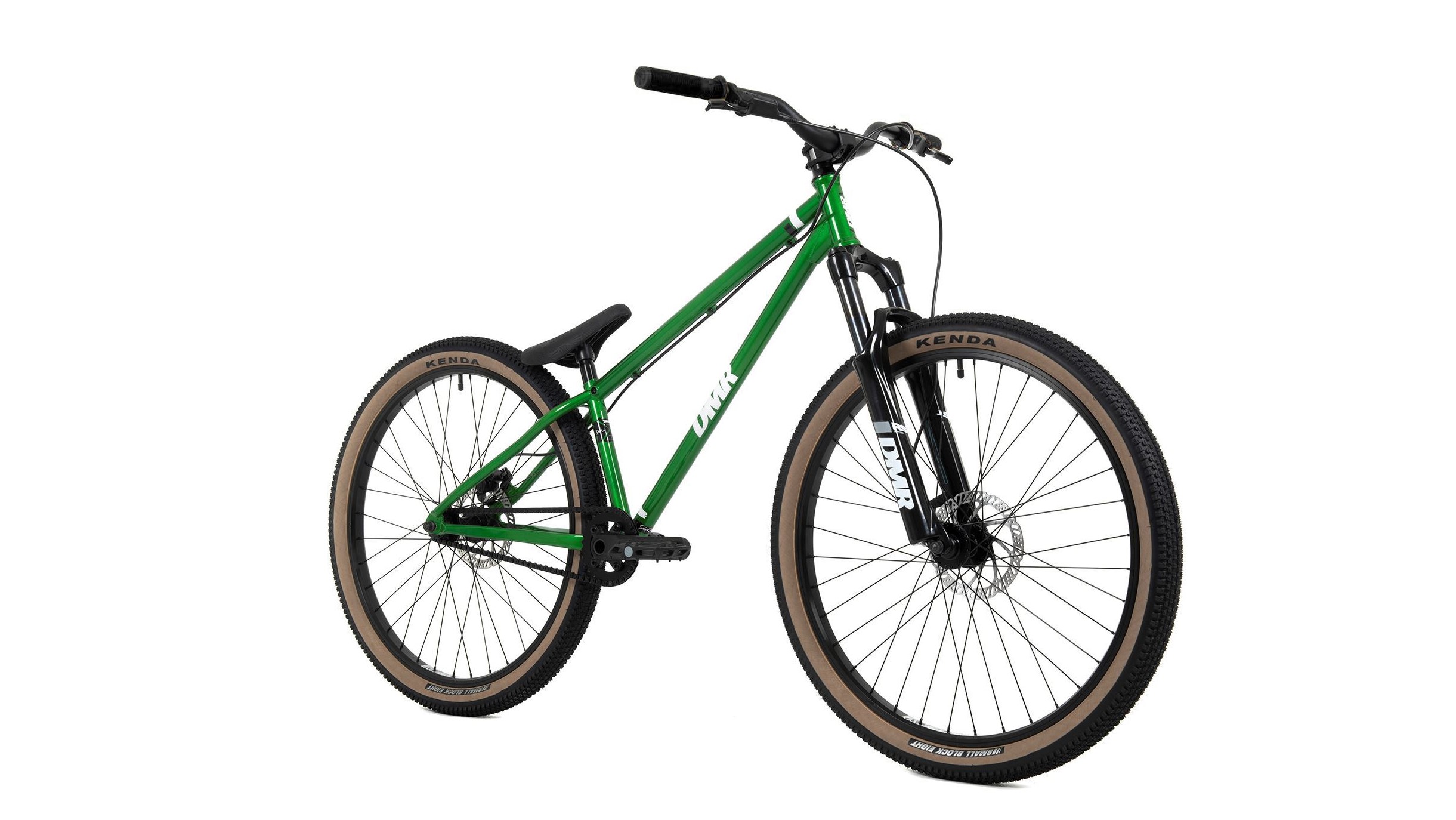
DMR Sect
Specifications
Reasons to buy
Reasons to avoid
DMR can rightly claim to be one of the defining dirt jump companies. It produces an entire range of components for this discipline of riding, from the best MTB grips to the best MTB flat pedals, and of course, frames. The Sect is DMR’s complete dirt jumping solution and features a tough 4130 chromoly frame.
Absorbing the landings is an RST Dirt 100mm fork with rebound adjustment, which is crucial on any jump bike. To keep all your launches stable there is a 740mm handlebar clamped by a 40mm stem, whilst DMR V6 flat pedals allow secure shoe contact and control in the air.
Fast-rolling wheels and tires are important on any jump bike, as you’ll only have one gear, making momentum management crucial. The DMR Sect rolls a set of Alex DM24 specification 26-inch wheels, with Kenda’s legendary Small Block 8 tire in the 2.1in volume.
Fusing DMR’s great component selection into a fantastically stable and forgiving dirt jumper is the Sect’s geometry. It has a 69-degree head angle, 420mm of reach and a stack height of 570mm.
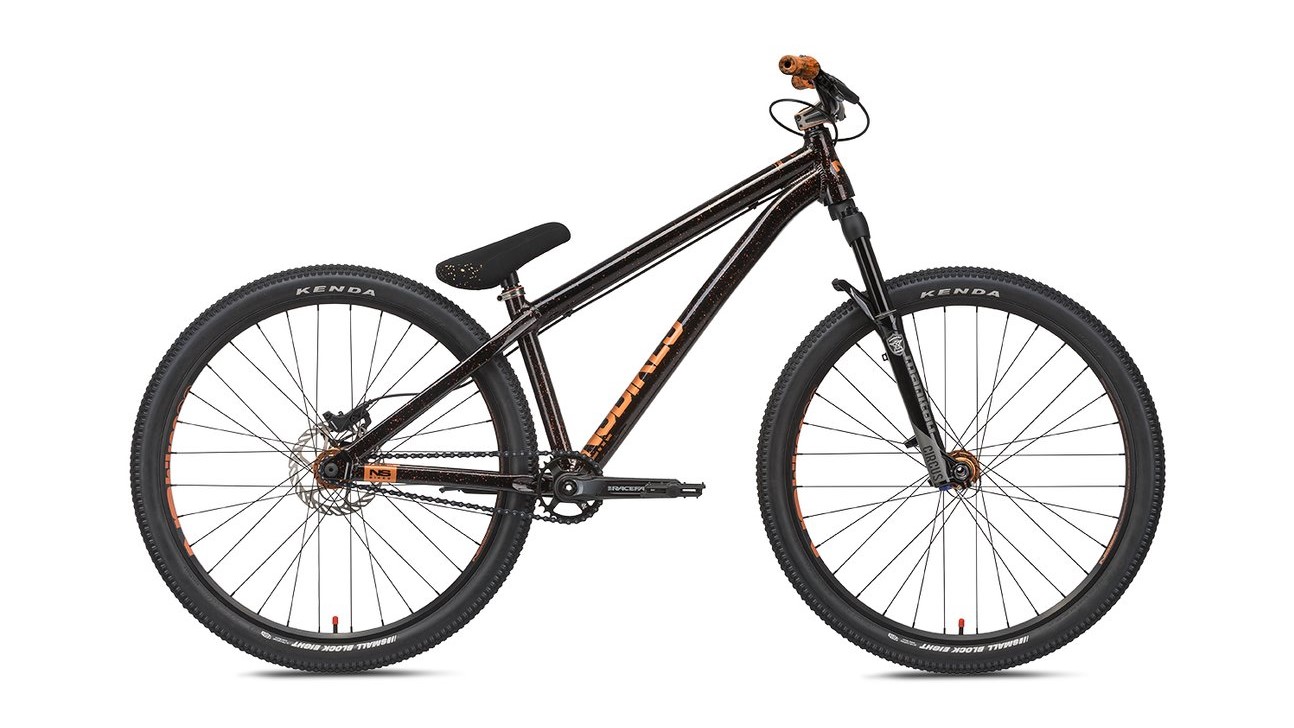
NS Movement 1
Specifications
Reasons to buy
Reasons to avoid
The Polish bike brand produces an impressive range of dirt jump and mountain bikes. Amongst these, the lightweight Movement 1 is a premium dirt jump bike, with aluminum frame construction.
Although many dirt jumping traditionalists will always prefer a steel frame, there are plenty of reasons to opt for an overbuilt 6061-grade aluminum frame such as the Movement.
The build is stellar, with some choice components. Cranksets are a big deal on any single-speed bike, especially one which is going to be launching and landing. NS has equipped the Movement 1 with Raceface Affect 170mm cranks, rotating a 28T chainring.
Brakes are blended, with Tektro’s MD-M300 Aries up front and SRAM’s Level hydraulic at the rear, both with calipers clamping 160mm rotors.
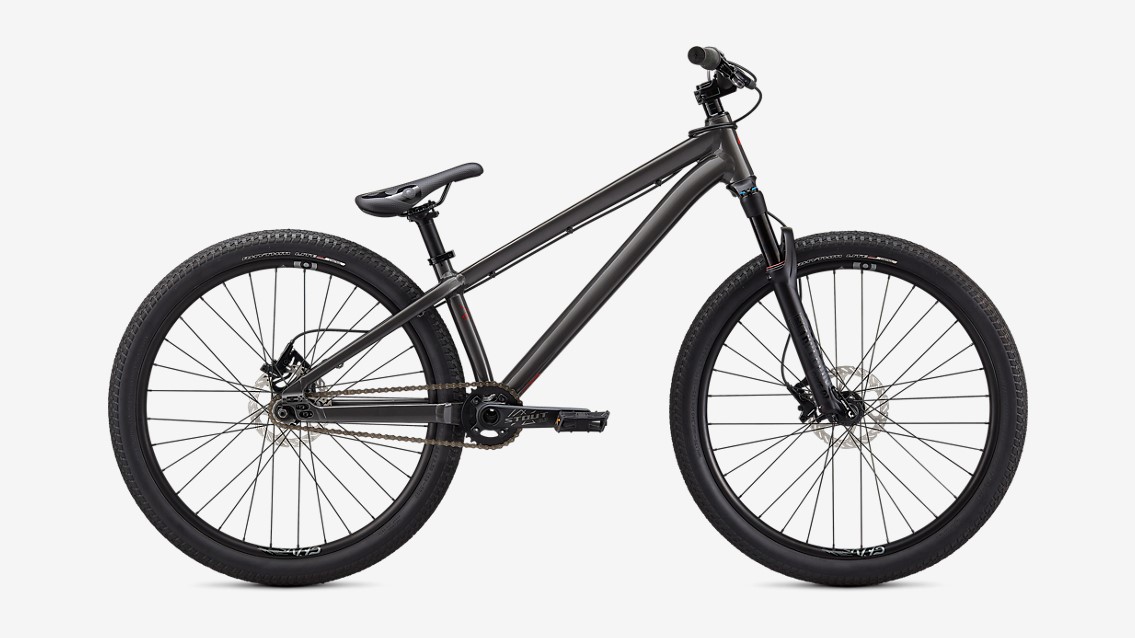
Specialized P3
Specifications
Reasons to buy
Reasons to avoid
Specialized might be best known for its outrageously light carbon fiber road and mountain bikes, but the Californian brand doesn’t ignore the needs of niche customers.
With the P3, Specialized uses oversized aluminum tubes to shape a dirt jump frame with some very neat features. The press-fit bottom bracket is unusual, but it does spin a Stout DJ crankset, with 170mm arms.
Although the P3 has a comparatively steep 69.5-degree head angle, its agile geometry is balanced by a 423mm reach and 338mm standover height. One of the cleverer frame details is the P3’s integrated rear dropout sliding tensioners, which make adjusting your chain tension effortless.
Generating all the momentum you’d need to roll into a series of jumps, are Specialized Rhythm Lite Control 26x2.3in tires. And ensuring that the consequences of a slight ‘off’ landing are easily absorbed is Rockshox’s stout 35mm stanchion Pike DJ fork.

Pivot Point
Specifications
Reasons to buy
Reasons to avoid
Pivot keeps it on Point with a traditional chromoly framed dirt jump bike. Interestingly, Pivot decided to partner with technical experts at DMR, for the development of its Point.
Designed to provide agile responses the Point features a 68-degree head angle and comparatively compact chainstays. To ensure the lowest possible standover height, Pivot’s designer opted for a 280mm seat tube length.
Recommended front fork travel is in the 100- to 120mm range, although Pivot says the Point’s head tube is strong enough for a 130mm length fork.
Adaptability is a notable feature of this dirt jump bike. The frame has vertical dropouts if you want to run gears for slalom, 4X or your dirt jump spot is a bit of a cycle away. There are options for horizontal sliding dropouts too, if you prefer to run easily adjustable chain tension as a single speed. There are also ISCG-05 tabs so you can run a chain guide or bash guard.
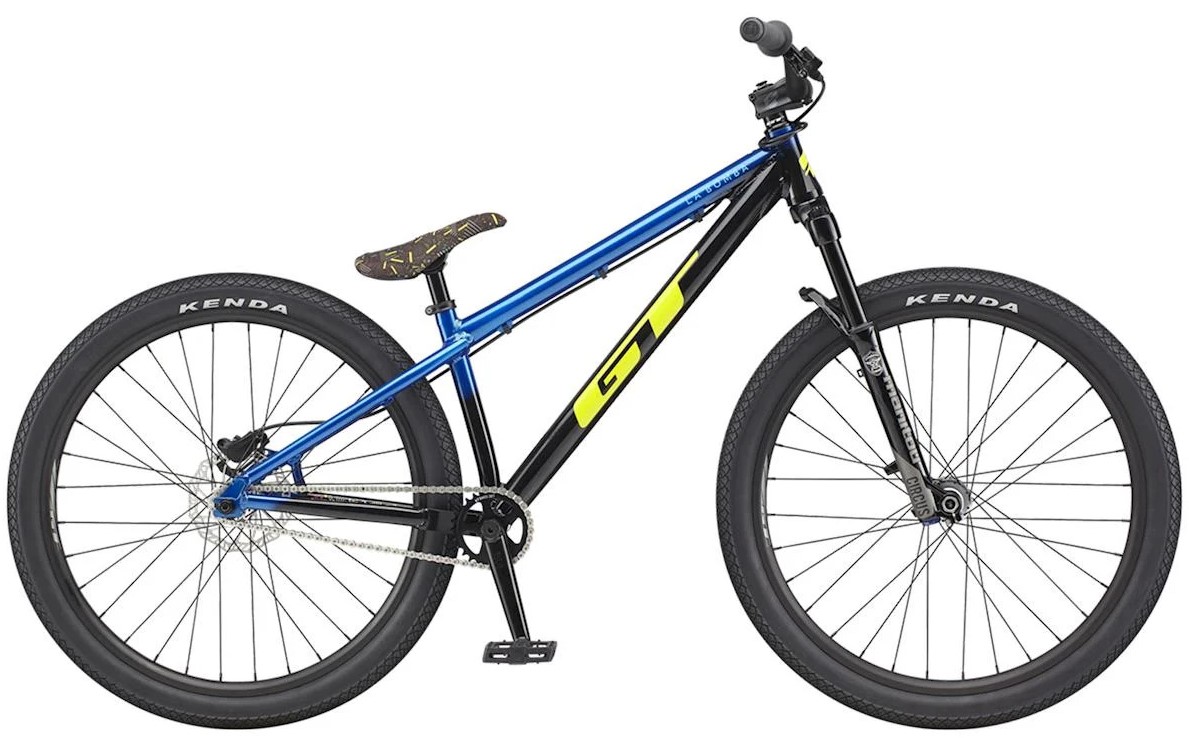
GT La Bomba Pro
Specifications
Reasons to buy
Reasons to avoid
If a jump bike is fundamentally a dirt riding BMX, the logic must follow that GT builds a great one.
The American brand is famed for its excellent heritage in BMX fabrication and design. For its dirt jump customers, GT produces the La Bomba Pro 26-inch.
Constructed from 6061-grade aluminum, the La Bomba Pro frame has a tube profile and wall thickness selected for strength. If this bike does get away from you and career into some terrain, it should still be fine.
Although the La Bomba’s frame is aluminum, GT has wisely selected to build it with a set of chromoly 170mm cranks. These are more robust and should offer greater durability than alloy cranks, especially if you are going to huck big drops and flat landings.
Controlling the La Bomba’s steering leverage is a relatively wide Spank Spoon 785mm handlebar (although this can be cut down), with 60mm of rise, while its head angle sits at 68.5-degrees.
To ensure this GT rolls into a series of jumps with the best possible momentum, its 26-inch wheels are shod with Kenda 3-Sixty low-resistance tires, featuring a generous 2.35in casing volume, to cushion those big landings.
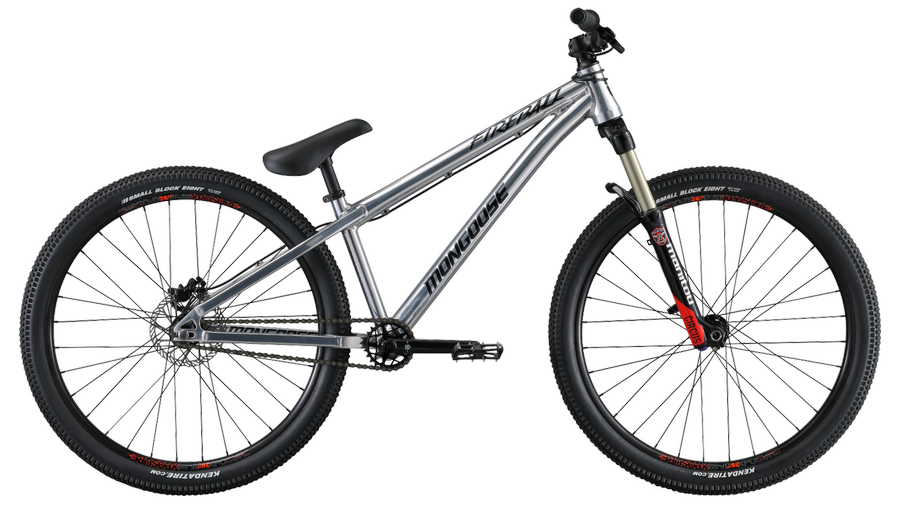
Mongoose Fireball SS
Specifications
Reasons to buy
Reasons to avoid
From the brand that has a proven track record of building great BMXs, you’d expect a very capable dirt jump bike too.
With its Fireball SS, Mongoose blends an overbuilt aluminum frame with some cleverly curated components. A Manitou Circus Expert fork cushions any impact, with 100mm of travel and faithfully executes your steering inputs too, thanks to a 110x20mm axle configuration.
If bar spins are a part of your dirt jumping repertoire this Fireball is ideal, with Mongoose’s own combination of brakes, pairing a mechanically actuated caliper at the front with hydraulic action at the rear. The result? No need for an aftermarket brake reconfiguration to get your bar spin trickery on.
Overall frame geometry uses a 292mm seat tube length to help shape a jump bike with only 680mm of standover and a 69-degree head angle.
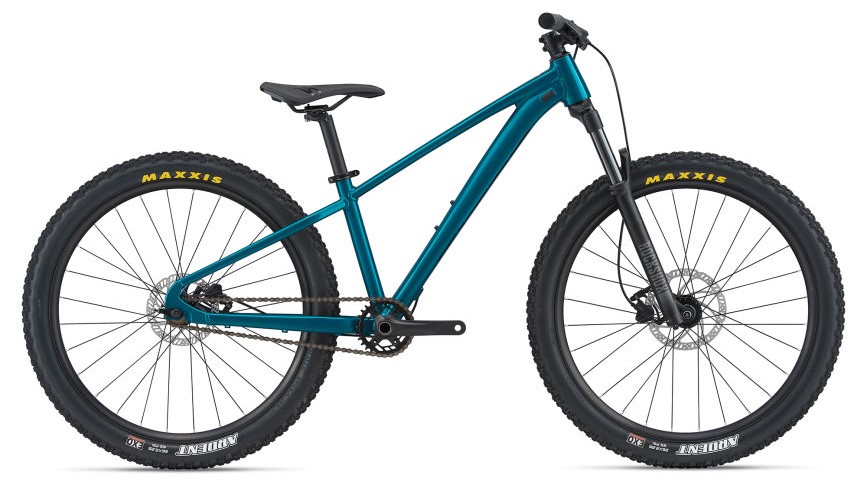
Giant STP 26 SS
Specifications
Reasons to buy
Reasons to avoid
Giant’s STP 26 SS is unusual amongst the selection of jump bikes, on our list. It features geometry and a fork specification that are is much closer to that of the best hardtail mountain bikes.
Whereas most dirt jump bikes cushion your landing with a 100mm fork, the STP 26 SS ups that to 120mm. To compensate for how much slacker that might make the frame’s geometry, potentially influencing its ability to pump into transitions facilitating a launch, Giant’s engineers have settled upon a 67-degree head angle.
Giant also offers two frame sizes to give riders a better fit based on their preference with Giant listing a reach difference of 27mm between its regular and large size STP 26 SS bikes. The supplied crankset is very short at 155mm so while the STP would never be a long-distance pedaler there shouldn't be any worry of pedal strikes.
The tire specification is also interesting, with Giant choosing the Maxxis Ardent. The superior grip allows this dirt jump bike to launch off rowdier terrain and tear up local singletrack, although switching tires will greatly increase rolling speed for flowing through manicured jump lines and/or riding at the skatepark.
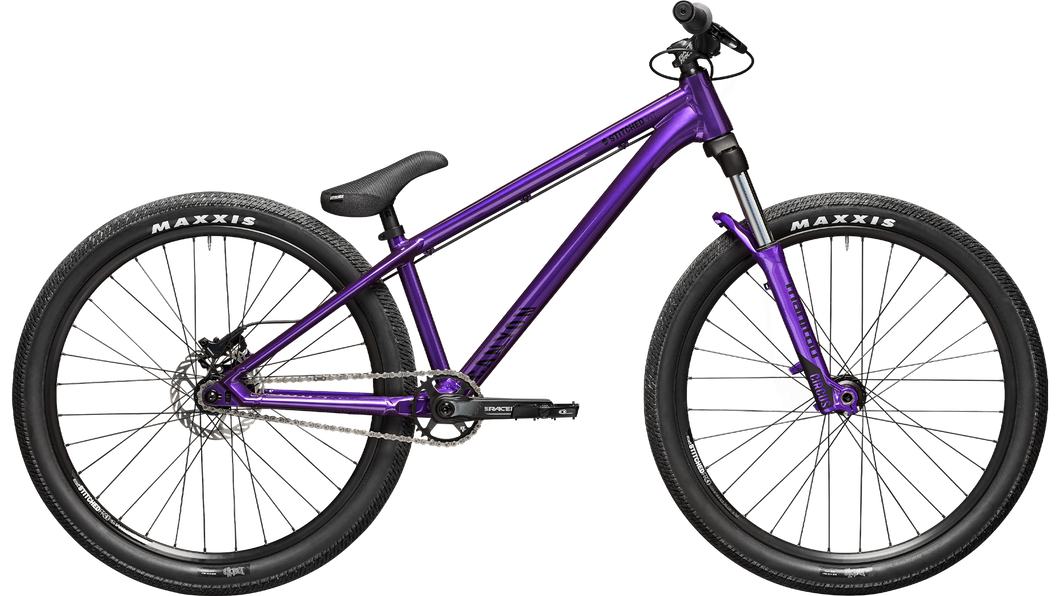
Canyon Stitched 360
Specifications
Reasons to buy
Reasons to avoid
The German direct sales giant offers incredible value with its Stitched 360. Attached to the aluminum frameset is an assortment of classy dirt jump components, the caliber of which leaves little desire for any aftermarket upgrades.
Raceface provides the Stitched cockpit and crankset. Leveraging that Manitou Circus Expert 100mm fork is a 780mm Raceface Chester riser bar, clamped by a 40mm stem. Balancing the bike’s center of gravity with your pedal inputs are compact 165mm cranks, from Raceface’s Affect range.
Unlike many of its dirt jump product rivals, Canyon offers the Stitched 360 in two frame sizes. Both bikes have the same 68.5-degree head angle and 310mm seat tube length, but the larger Stitched 360 has 17mm greater reach, affording taller riders stability that is better suited to their size.
How to choose the best dirt jump bike
What is the best dirt jump bike frame material?
Frame strength is crucial. Dirt jump bikes follow a broadly similar design theory to BMXs, prioritizing strength overweight to avoid any failures.
Many dirt jump riders prefer steel to aluminum, due to the higher inherent strength yield and ease of repair. If you do manage to ding and crack a steel tube, getting it welded up is not that expensive or technically challenging.
Most of the contemporary dirt jump bikes have transitioned to oversized aluminum tubing. With these large tubes and their fat junctions, there is adequate strength for even the most daring drops and jumps.
Steel is traditionally a more compliant material. With the majority of a dirt jump bike's life involving repeatable heavy impacts this could be an advantage for a rider's wrists and ankles. Aluminum is a lot stiffer and offers a much better strength to weight ratio, reducing the weight of the bike, which makes throwing technical tricks in the air a lot easier.
Do I need suspension?
Arguably for dirt jump, pump track and skatepark you don't need suspension, however dirt jump bikes often feature suspension forks with around 100mm of travel to smooth out landings, especially useful for those who ride rougher trails or are still learning.
While dirt jumping doesn't demand the highly tunable internals that you find on the best enduro bikes, cross-country or downhill bikes you do need some adjustment. The most important is being able to control the stiffness as if a fork is too soft you will bottom out on take-offs and landings which can affect control.
What wheel size do dirt jump bikes use?
Unlike the rest of mountain biking where 29-inch wheels have now become the dominant wheel size, dirt jump bikes still use 26-inch wheels. There is good reason for this, the smaller diameter wheel not only increases maneuverability when performing jumps and navigating pump tracks but is also technically stiffer and stronger.
What tires are best for dirt jumping?
Tire choice is always a compromise, and with a dirt jump bike, that is a relationship between grip and rolling speed.
As most dirt jump bikes have only one gear, you rely greatly on rolling momentum to enter a jump transition at the correct speed. Most dirt jump bikes have 26-inch cross-country mountain bike tires, with very mild tread blocks.
The issue is grip. If you do manage to land a jump slightly skew, a fast-rolling tire (with less grip) will wash out easier. A recommendation to find the best mountain bike tire compromise, might be to run a slightly more aggressive front tire and very fast-rolling rear tread. This should allow for a balance of good roll-in speed and retain some margin of safety, for managing those slightly imperfect landings.
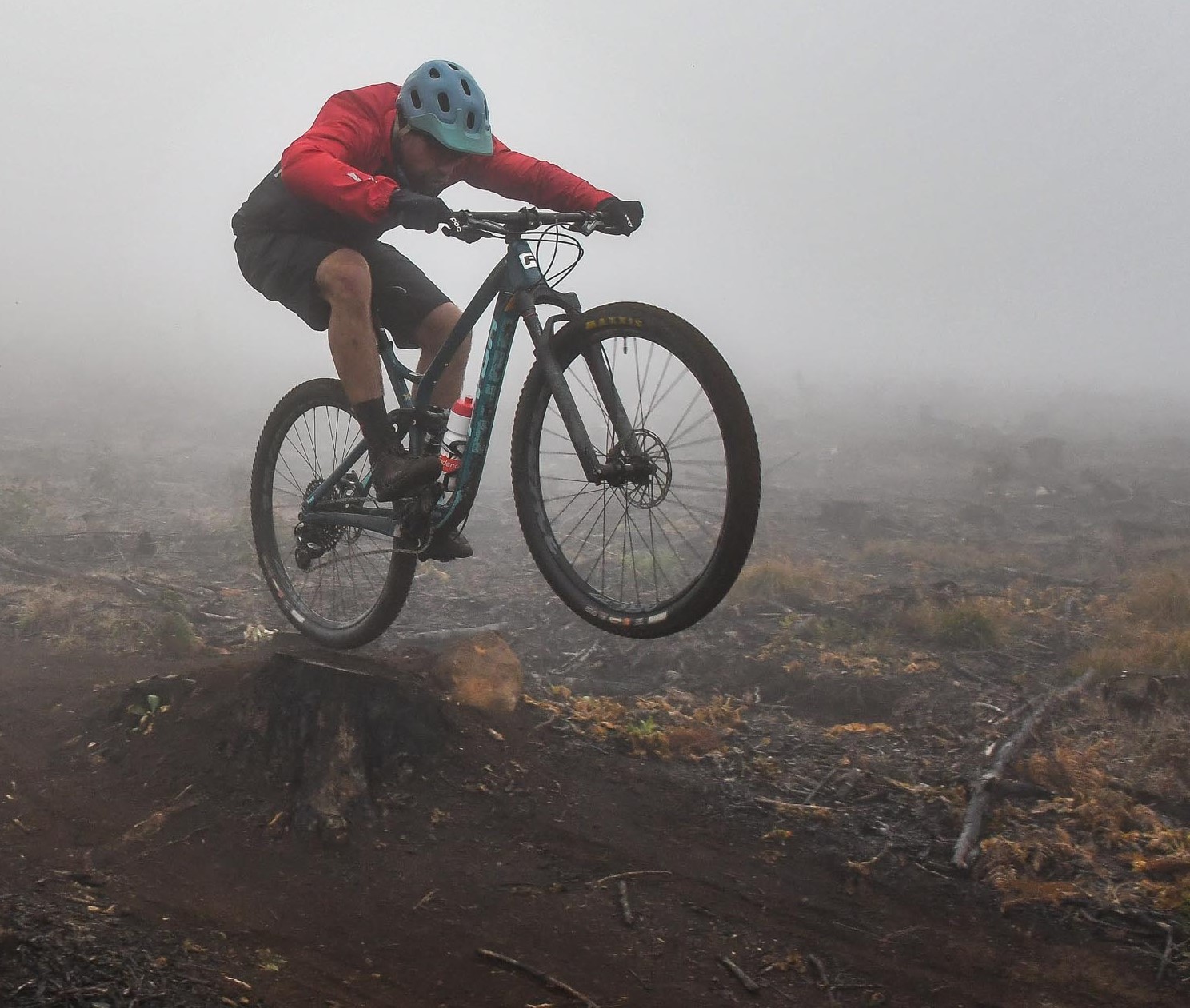
Lance Branquinho is a Namibian-born journalist who graduated to mountain biking after injuries curtailed his trail running. He has a weakness for British steel hardtails, especially those which only run a single gear. As well as Bike Perfect, Lance has written for MBR.com, Off-Road.cc and Cycling News.
